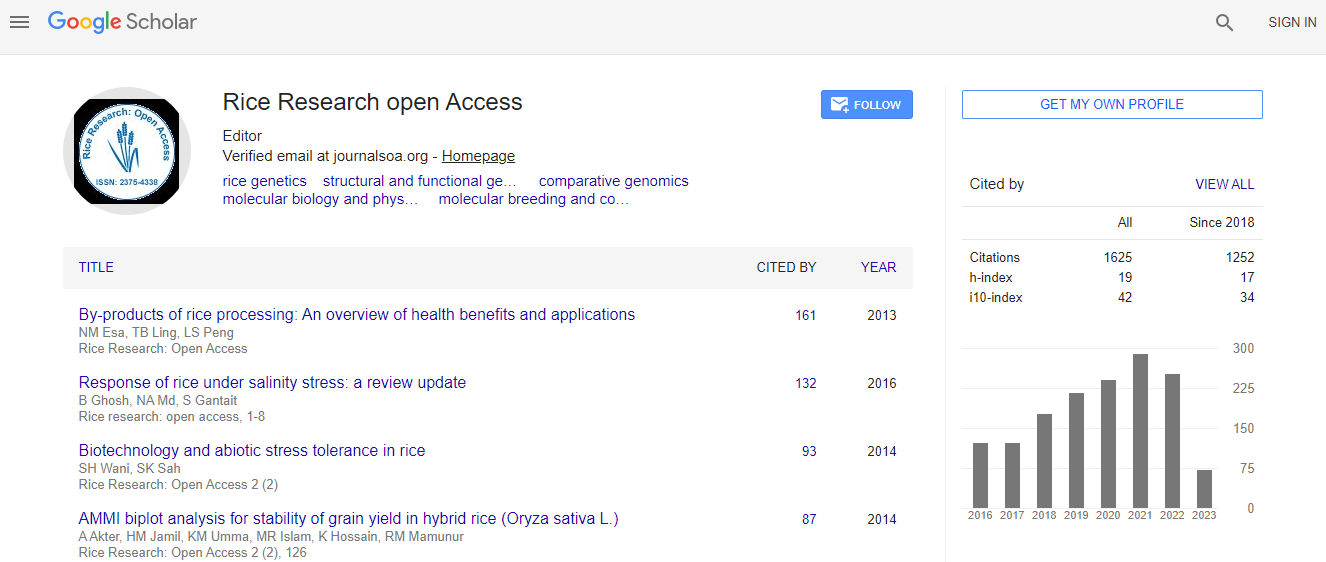Research Article
Development of Component Lines (CMS, Maintainer and Restorer lines) and their Maintenance Using Diversed Cytosources of Rice
| Ariful Islam1*, Mian MAK2, Rasul G2, Bashar K3 and Fatema-Tuj-Johora4 | ||
| 1Department of GPB, EXIM Bank Agricultural University, Bangladesh | ||
| 2Department of Genetics and Plant Breeding, BSMRAU, Gazipur1706, Bangladesh | ||
| 3International Potato Research Centre (CIP), Bangladesh | ||
| 4Department of Crop Botany, EXIM Bank Agricultural University, Bangladesh | ||
| Corresponding Author : | Dr. Ariful Islam M Department of GPB, EXIM Bank Agricultural University, Bangladesh Tel: +88-01711872774 E-mail: i.aarif@yahoo.com |
|
| Received February 24, 2015; Accepted March 31, 2015; Published April 03, 2015 | ||
| Citation: Islam A, Mian MAK, Rasul G, Bashar K, Johora FT (2015) Development of Component Lines (CMS, Maintainer and Restorer lines) and their Maintenance Using Diversed Cytosources of Rice. J Rice Res 3:140. doi: 10.4172/2375-4338.1000140 | ||
| Copyright: © 2015 Islam A, et al. This is an open-access article distributed under the terms of the Creative Commons Attribution License, which permits unrestricted use, distribution, and reproduction in any medium, provided the original author and source are credited. | ||
Related article at Pubmed Pubmed  Scholar Google Scholar Google |
||
Abstract
The practice of hybridization has greatly contributed to the increase in crop productivity. A major component that exploits heterosis in crops is the cytoplasmic male sterility (CMS)/nucleus-controlled fertility restoration (Rf) system. The development and use of hybrid rice varieties on commercial scale utilizing male sterility and fertility restoration system has proved to be one of the mile stones in the history of rice improvement. Pollen sterility status of 148 exotic rice germplasm was assessed at flowering stage. Sixteen genotypes showed 100% pollen sterility status which was considered as completely male sterile lines (A-line). Sixteen genotypes were also identified as completely fertile due to 80% and above pollen and spikelet fertility. For identification of proper maintainer lines, the identified 16 CMS lines chance crossed with established known maintainer lines viz. IR 58025B, IR 62829B, GAN46B, IR 68888B and BRRI1B. Based on pollen male sterility status of the F1s lines it was indicated that 10 out of 16 were maintained by IR 58025B line, 8 CMS lines were maintained by IR 62829B, three CMS were maintained by IR 68888B and one CMS line was maintained by GAN46B and BRRI1B. Restoration potentiality of identified 16 suspected restorer genotypes were assessed throgh judgement of pollen and spikelet fertility of F1s developed through crossing with five standard CMS lines. Based on 80% and above pollen and spikelet fertility of F1s, seven suspected restorers were identified as restoerer against IR 58025A, two against GAN 46A, five against IR 62829A and two against IR 68888A.

 Spanish
Spanish  Chinese
Chinese  Russian
Russian  German
German  French
French  Japanese
Japanese  Portuguese
Portuguese  Hindi
Hindi 
